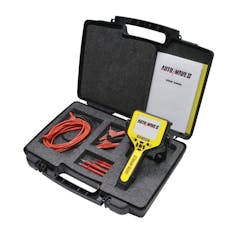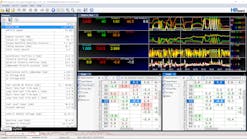Tool Review: HickokWaekon Auto Wave II Auto-Setting Waveform Viewer
The HickokWaekon Autowave II Oscilloscope, No. 75200, features a portable two-channel automotive oscilloscope designed to simplify waveform diagnostics. This tool is designed to allow technicians to view sensitive computer signals that scan tools can’t. This scope doesn’t require add-on scan tools or PC required scopes, the company says. This oscilloscope is easy-to-use with no experience required: the Auto-Set feature automatically sets the voltage and time scales so anyone can view waveforms.
The review
Component testing is made “easy” with HickokWaekon’s Auto-Setting Waveform Viewer II, says shop owner and PTEN contributing editor Barry Hoyland. Hoyland used the tool to observe a CAN data bus for activity, and fuel injector and fuel pump waveforms.
Hoyland of VSSCA in Las Vegas, Nevada also connected a pressure transducer to the tool to observe a vacuum waveform in order to determine engine condition.
The two-channel feature was a big plus for Hoyland, who has previously used the single channel version of this tool. He says the addition of the second channel allows more functionality.
“The ability to have two channels to compare two components at once is useful, and the fact that both channels can be set up automatically saves a lot of time,” he says. “Since there is an auto-set feature it is not necessary to spend time going through a library to obtain a pattern, or to manually determine and set the operating range of the tool.”
Setup is simple, and the tool comes ready to use except for installing the battery, which came included.
Also included with the tool is a manual with instructions on how to save and store waveforms, test leads to connect to the component being tested and a blow molded case with enough space for storing the included cables and connector ends, plus room to spare.
While the small size of the tool was an advantage for Hoyland, because of the quick start and setup time, he says he would have liked to have a port to connect a larger screen, as well as record directly onto a tablet or laptop.
“I like the ease of use and think that it would be an excellent first waveform tool for technicians that are not experienced enough to utilize all the features of a full lab scope, but need to understand how to obtain and start using waveforms in
their diagnostic processes,” Hoyland concludes.



